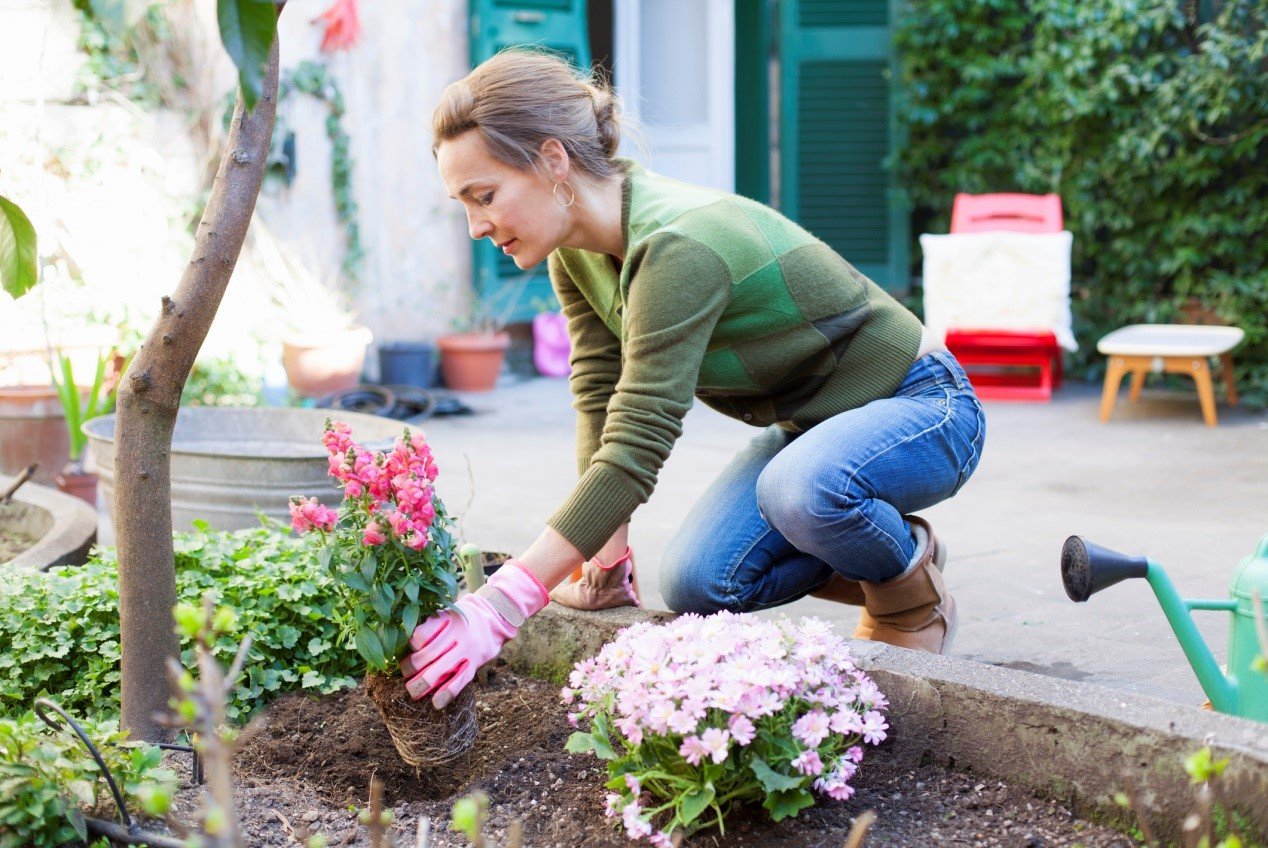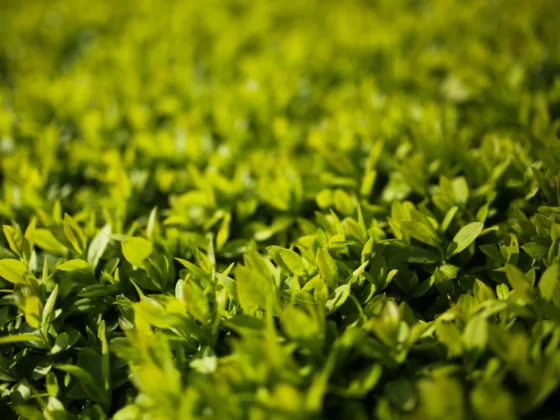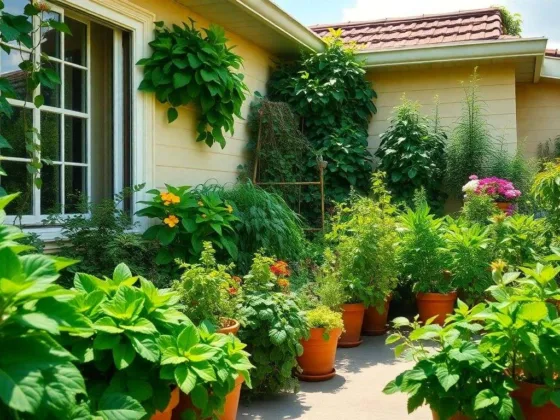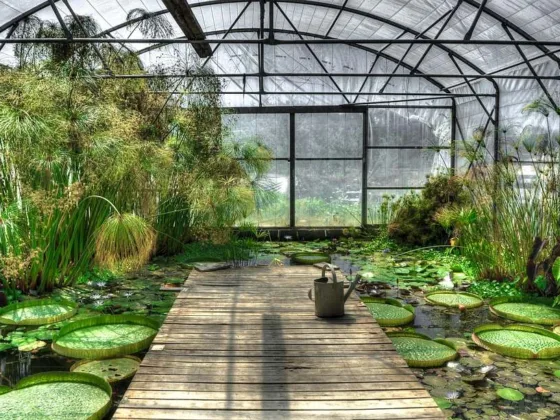Table of Contents Show
Ornamental plants endure various seasons and beautify the landscape in our homes. Whether you want flowers or fruits that will keep your yard alive all year round, there are several varieties to choose from.
However, if you are new to ornamental gardening, we will discuss all you need to know about planting and caring for those lovelies. You want your plants to stay healthy, don’t you? So, let us dive right in.

What is an Ornamental Plant?
An ornamental plant is a plant that is raised purely for decoration. It may produce fruits (click here to read more) but its aesthetic value is held in high esteem than its food content.
Most times, we intentionally grow ornamental plants but, in some cases, certain plants naturally grow around our homes and add to the aesthetic appeal of the landscape. Such plants are also considered ornamental plants.
These plants are in two categories: herbaceous and woody.
Herbaceous ornamentals include the following:
- Lilies: Daffodils, Canna, Day lily
- Annuals: Calendula, Sunflower, Balsam
- Biennials: Sweet William, Holy hock
- Perennials: Asparagus Officinalis, Gladiolus
- Cactus, Ferns, and Orchids
Woody ornamentals include the following:
- Hedge plants: Iroxa, Duranta
- Conifers: Juniper, Pine
- Flowering trees: Ashok, Magnolia
- Flowering shrubs: Jasmine, Rose
- Non-flowering shrubs: Musanda, Croton
- Palms: Oil palm, Toddy palm
- Foliage trees: Eucalyptus, Banyan trees
- Climbers and creepers: Bougainvillea
Read Also:
Steps to Establishing a Successful Ornamental Garden
If you think planting is all about digging a hole and placing a seed or a seedling in it, then you are wrong. You need to prepare the site, check out whether the soil is right for the plant, and consider the best season to plant. The following steps will assist you in establishing a successful ornamental garden:
Survey the Site
Surveying the site helps you to know whether it can support plant growth. If you want to site your garden around a new building, you will find leftover plaster, limestone, or other materials that may not allow the plant access to the required nutrients. Hence, ensure you scoop the topsoil and add a layer of fresh, organic soil.
Additionally, you want to be sure that the soil has good drainage. A poorly drained soil can hold excess water that may result in weak roots and stems and then kill the plant later. To improve soil drainage, break up hardpans through deep tilling or create a channel for excess water to leave the garden.
Plant Selection
Most shrubs and trees are grown in containers, so you cannot see their roots. Although some are sold as bare roots, balled, or field-grown, ensure they are of high quality.
If the supplier has container plants, ask them to invert the containers so you can examine their roots. You can contact Georgetown nursery to get a list of places where you can obtain healthy shrub and tree varieties.
Planting Space
When planting, ensure that the hole is two times wider than the ball of the root. This will help the roots to establish properly and grow rapidly. Also, the depth of the hole should be just enough to contain the ball. After placing the plant, fill the hole with enough soil and tamp firmly.
If you want to plant in groups for uniform growth, prepare a bed instead of individual holes. Ensure the bed is 12-15 inches deep, and then add a fertilizer that is rich in nitrogen.
Mulching
Mulching improves root formations because it retains soil moisture and regulates the soil temperature. It also prevents weeds from competing with the plant for nutrients and space. You can place landscape fabric under the mulching material to conserve soil moisture.
Staking
Young trees, those less than four feet tall, and those that are planted in busy areas like schools require staking to protect the tree trunk from damage.
Intense winds can uproot young plants or cause them to bend over. The stakes should be placed around the planting hole and firmly placed in the ground. You can remove the stakes when the trees are about 4 to 6 months to prevent trunk injury.
Care Tips for Freshly Planted Ornamentals
Use these tips to care for new ornamental plants:
Watering
New plants require regular watering. The roots must remain moist for about 6 to 8 weeks, but this depends on the plant and soil type. Some shrubs and trees can thrive without frequent watering even in the absence of rainfall whereas others require daily watering.
Fertilizer Application
You can use a general-purpose or slow-release fertilizer. If using a general-purpose fertilizer, apply it lightly for the first few months.
Shrubs that are less than twelve inches require one teaspoon of a 16-4-8 or 12-4-8 fertilizer, or one teaspoon of 10-10-10 or 8-8-8 all through the period of growth. Apply the fertilizer around the perimeter of the hole.
New plants benefit from a balanced fertilizer like the 8-8-8. If you want to apply it on the foliage, ensure that is dry, and then water the plant after application.
When the plant matures into a tree, you should apply two teaspoons of 16-4-8 or 12-4-8. The fertilizer should be evenly spread around the trunk area to about one foot after the canopy.
If you are using a slow-release fertilizer, ensure you follow the guidelines on the packaging. Many of them can meet the plant’s nutrient needs for about 6 to 12 months after the first application.
The downside is that it is more expensive than general-purpose fertilizer. You can visit https://homeguides.sfgate.com/ to read more about fertilizer application.
Conclusion
Ornamental plants are essential in landscaping and gardening. They add color to anywhere they are found and can turn an uninteresting place into a “site (pun intended) to behold”.
Ornamentals are in two forms: herbaceous and woody, and you can choose from any of them. But you should consider the climatic condition of your area and the soil type before plant selection.
Ornamental plants require care, but some require more care than others. For instance, if your choice plant requires a lot of pruning, it means you need to give more time to maintenance.
So, if you are not ready to prune trees now and then, choose those that do well without it. The steps shared in this article will help you to establish a successful ornamental garden as a beginner.










